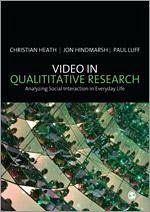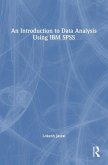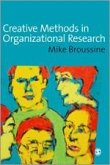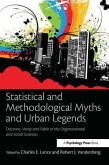Video provides unprecedented opportunities for social science research, enabling fine-grained analysis of social organisation, culture and communication. Video in Qualitative Research provides practical guidance for students and academics on how to use video in qualitative research, how to address the problems and issues that arise in undertaking video-based field studies and how to subject video recordings to detailed scrutiny and analysis. Heath, Hindmarsh and Luff consider the ethical and practical issues that arise in recording and gathering data as well as how video enables new and distinctive ways of presenting insights, observations and findings to both academic and practitioner audiences. The book is illustrated throughout with a wide range of case material drawn from the authors own research projects, and these cases serve to situate the practical and methodological guidance offered by the book into real research scenarios. Video in Qualitative Research is an invaluable guide for students and researchers across the social sciences thinking of using video as part of their research. Christian Heath is Professor of Work and Organisation, Kings College London Jon Hindmarsh is Reader in Work Practice and Technology, Kings College London Paul Luff is Professor in Organisations and Technology, Kings College London
Hinweis: Dieser Artikel kann nur an eine deutsche Lieferadresse ausgeliefert werden.
Hinweis: Dieser Artikel kann nur an eine deutsche Lieferadresse ausgeliefert werden.
The book's strength lies in its practicality, both in the way it can be used and in the way that the authors approach the subject matter. Each chapter takes the reader through a different stage of the research, is
clearly laid out and provides useful tips at appropriate points throughout the text. There is some recommended reading and a summary of the key points at the end. But it is the way that the authors draw on their extensive experience in the field to provide clear and accessible advice that makes the book stand out. They highlight
the particular challenges that are associated with using video while providing illustrations of the ways in which
these challenges can be approached; their emphasis is on collaboration and experimentation and, above all, clarity on the purpose for which the data is being collected....whether you are interested in the 'minutiae of human conduct' or in the use of video recording as part of your research, this book will be a valuable addition to your library
Dr Rowena Passy
Social Research Association News
The authors successfully strive to deliver a text to introduce and guide those new to video based research through potential dilemmas, hazards and pitfalls... Video in Qualitative Research: Analysing Social Interaction in Everyday Life is a well-constructed and useful introduction for Undergraduate students who wish to undertake video based projects for the first time. The key strength of the manuscript lies in the detailed analysis of transcripts and the case studies presented in chapter 4. As such, whilst the manuscript would be beneficial to Undergraduates from a variety of disciplines, those seeking to use video in conjunction with conversation analysis methods, and those wishing to use video to assist in the observation and study of workplace environments will find it the most useful. This body of work offers considerable insight into the complexities of engaging with a video based qualitative research project.
Qualitative Methods in Psychology
The major strengths of this book [are] that it provides a history of this methodology, an examination of routine problems and challenges, and clear guidance for conducting video research, particularly for collection, analysis, and presentation of data... We think this text, on the whole, is quite brilliant. It is thorough, thought-provoking, and generally accessible. It promises to guide a whole new generation of researchers to better use video in qualitative research.
Mary Rice and Stefinee
Teacher Development: An International Journal of Teachers' Professional Tevelopment
Overall, Video in Qualitative Research is a much-needed guide for the CSCW research community as it provides keen insight into the challenges and opportunities provided by video technologies. Luckily for those who are not as well versed in qualitative research, the authors clearly spell out all of their arguments without relying too heavily on previous understanding of the value and use of such research. The plain and unassuming way in which the authors write is appealing; it is as if they are simply conversing with you as they walk you through the necessary steps to use video in qualitative research. While some may read this book and find it best suited to an entry-level audience, it is truly a comprehensive guide that will be a relevant and insightful read for anyone looking to employ video recording methods.
Behzod Sirjani
Springer
clearly laid out and provides useful tips at appropriate points throughout the text. There is some recommended reading and a summary of the key points at the end. But it is the way that the authors draw on their extensive experience in the field to provide clear and accessible advice that makes the book stand out. They highlight
the particular challenges that are associated with using video while providing illustrations of the ways in which
these challenges can be approached; their emphasis is on collaboration and experimentation and, above all, clarity on the purpose for which the data is being collected....whether you are interested in the 'minutiae of human conduct' or in the use of video recording as part of your research, this book will be a valuable addition to your library
Dr Rowena Passy
Social Research Association News
The authors successfully strive to deliver a text to introduce and guide those new to video based research through potential dilemmas, hazards and pitfalls... Video in Qualitative Research: Analysing Social Interaction in Everyday Life is a well-constructed and useful introduction for Undergraduate students who wish to undertake video based projects for the first time. The key strength of the manuscript lies in the detailed analysis of transcripts and the case studies presented in chapter 4. As such, whilst the manuscript would be beneficial to Undergraduates from a variety of disciplines, those seeking to use video in conjunction with conversation analysis methods, and those wishing to use video to assist in the observation and study of workplace environments will find it the most useful. This body of work offers considerable insight into the complexities of engaging with a video based qualitative research project.
Qualitative Methods in Psychology
The major strengths of this book [are] that it provides a history of this methodology, an examination of routine problems and challenges, and clear guidance for conducting video research, particularly for collection, analysis, and presentation of data... We think this text, on the whole, is quite brilliant. It is thorough, thought-provoking, and generally accessible. It promises to guide a whole new generation of researchers to better use video in qualitative research.
Mary Rice and Stefinee
Teacher Development: An International Journal of Teachers' Professional Tevelopment
Overall, Video in Qualitative Research is a much-needed guide for the CSCW research community as it provides keen insight into the challenges and opportunities provided by video technologies. Luckily for those who are not as well versed in qualitative research, the authors clearly spell out all of their arguments without relying too heavily on previous understanding of the value and use of such research. The plain and unassuming way in which the authors write is appealing; it is as if they are simply conversing with you as they walk you through the necessary steps to use video in qualitative research. While some may read this book and find it best suited to an entry-level audience, it is truly a comprehensive guide that will be a relevant and insightful read for anyone looking to employ video recording methods.
Behzod Sirjani
Springer








